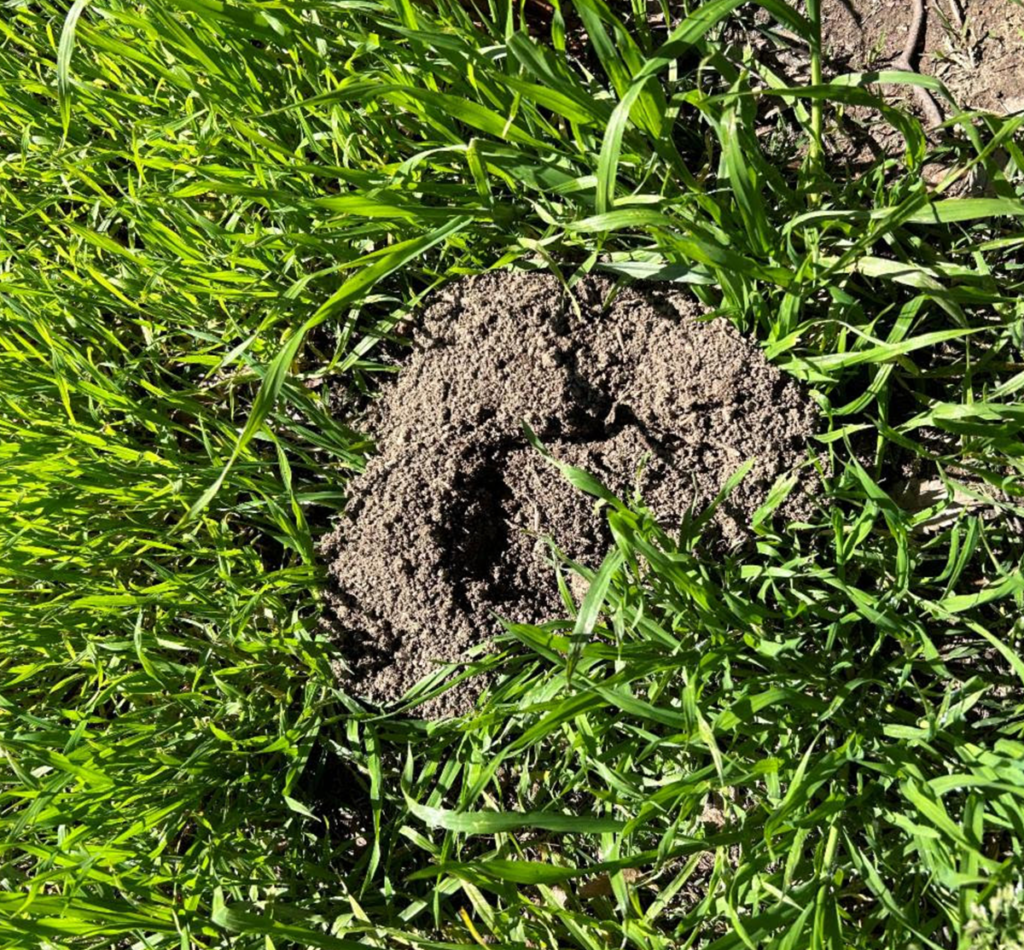
What is the difference between a Gopher hole & a Mole hole?
If you’ve ever stumbled upon a hole in your yard, your first thought might be to blame it on moles or gophers. But did you know that these seemingly similar creatures create distinct burrows? Understanding the difference between a gopher hole and a mole hole can be crucial for effective pest control.
What's a Gopher hole look like?
Let’s start by dissecting the characteristics of a gopher hole. Gophers, members of the family Geomyidae, are burrowing rodents known for their destructive tunneling. “Gopher burrows” typically feature a distinctive crescent-shaped mound of loose soil surrounding the entrance. At the center of the crescent is a “plug”. Gopher burrows tend to be deeper and more extensive than those of moles. Gopher burrows have multiple entrances and interconnected tunnels forming a complex underground network.
What's a Mole hole look like?
Let’s turn our attention to moles and their burrowing behaviors. Moles belong to the family Talpidae and are specialized diggers equipped with powerful forelimbs and shovel-like hands. Unlike gophers, moles do not create conspicuous mounds around their burrow entrances. Instead, “mole hills” are usually low and conical, resembling small heaps of displaced soil. Mole tunnels are shallower compared to those of gophers and often follow straighter paths, reflecting the mole’s preference for linear digging.
Divergent digging strategies:
While both gophers and moles are adept excavators, they employ distinct digging strategies. Gophers are herbivorous rodents that tunnel primarily for foraging and shelter. Their burrows tend to be more extensive and complex, featuring side tunnels for storing food and nesting chambers for raising their young. In contrast, moles are insectivores that tunnel to hunt for earthworms, grubs, and other soil-dwelling prey. Mole tunnels are more straightforward, consisting of main runways and feeding galleries optimized for efficient hunting.
Ecological impact & control measures:
Understanding the ecological impact of gophers and moles is essential for implementing effective commercial or residential pest control. Gophers are notorious for damaging crops, lawns, and gardens by gnawing on roots and destabilizing soil structures. In agricultural settings, gopher infestations can lead to significant yield losses and economic damages. Conversely, moles primarily benefit ecosystems by aerating the soil and controlling insect populations. However, excessive mole activity can still cause aesthetic and economic damage to landscapes.
Make a informed decision:
The difference between a gopher hole and a mole hole lies not only in their physical characteristics but also in their ecological roles and behavioral. By recognizing these distinctions, homeowners and land managers can make informed decisions when it comes to pest control. Whether you’re dealing with gophers or moles, proactive measures such as trapping, fencing, and habitat modification can help mitigate their impact.



